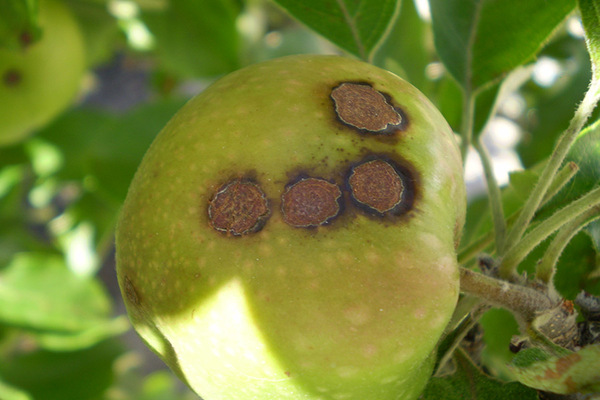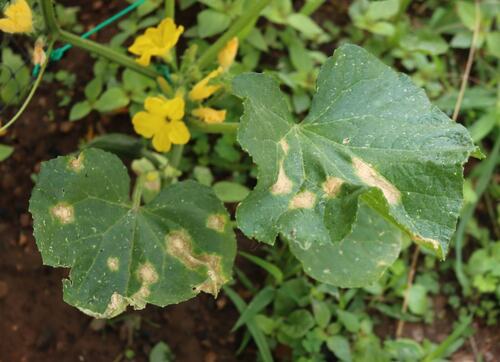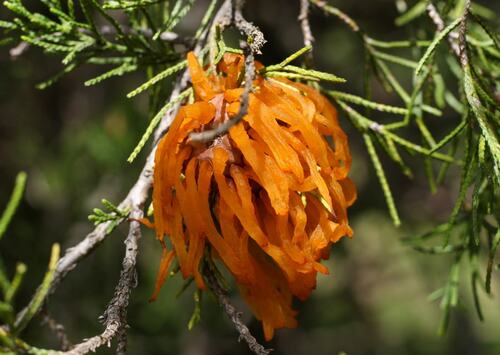Spring Tree Care Tips: Identifying and Preventing Common Diseases

Photo source: agric.wa.gov.au
Introduction
Spring is a great time to consider San Francisco tree and shrub pruning services before the warm weather rush begins.
Protecting your Trees from Common Spring Diseases
Tree diseases and pests can make an unwanted appearance any time of the year. However, the warmer weather and an influx of insects emerging from winter dormancy in early spring tend to exacerbate or cause tree diseases.
Bacteria and viruses thrive in the spring, which encourages decay.
Not all bacteria are bad for plants and soil. In fact, most are beneficial! However, there are over two hundred types of bacteria that cause diseases in plants. Bacteria can spread in several ways, including via insects, splashing water, other diseased plants, or tools. Once plants are affected, it can be difficult to control. Remove infected plants or parts immediately from the garden.
Viruses, on occasion, can be beneficial too, but for the most part, they are bad for the garden. They can persist for many years before becoming a problem. Unlike bacteria and fungi, viruses must physically enter the plant, often through insects. Insects feed on infected plants and transmit the viruses to healthy plants when they feed again. Unfortunately, once infected, there are no chemical treatments for eliminating a virus. All suspected plants should be removed once detected. Keep in mind, it is difficult to prevent viruses from affecting your plants despite your best efforts.
Leaf Spot

Cherry Leaf Spot Fungus - Photo: Thaddeus McCamant, Central Lakes College
Fungus is also a very common problem, especially in wet weather. Fungi spores are spread by the wind, so any tree is vulnerable. Most leaf spot diseases are caused by fungi, but some are caused by bacteria. Some insects also cause damage that appears to be a leaf spot disease. The chief symptom of a leaf spot disease is spots on foliage. The spots will vary in size and color depending on the plant affected and the stage of development. Spots are most often brownish, but may be tan or black.
Leaf spots are usually a surface problem, so it is not necessary to worry about losing a tree to this issue. Leaf spots on trees are very common and generally do not require spraying. Leaf spot disease may result in some defoliation of a plant. Small or newly planted trees that become defoliated are more at risk of suffering damage until they become established. An established plant can tolerate almost complete defoliation if it happens late in the season or not every year. Also, you should rake up fallen leaves regularly and remove standing water.
Anthracnose

Cucumber Plants with Signs of Anthracnose Infection
Another common disease is anthracnose, which targets ash, maple, oak, sycamore, and other shade trees. Anthracnose, also referred to as Colletotrichum leaf spot, refers generally to diseases caused by a variety of fungi that result in visible damage to many ornamental trees and shrubs. This fungus hibernates during the winter on fallen leaves or twigs. In the spring, the spores of the fungi are transferred by water or air to newly forming leaves. Infections appear within days or weeks.
The most common sign of anthracnose is irregularly shaped brown or tan spots on leaves. Sometimes leaves can become curled or cupped. This disease is usually most prevalent in the lower branches of a tree but can sometimes travel up a tree’s canopy. This disease can’t be treated with a fungicide, but it can be relieved with proper pruning and care. As with leaf spot disease, get rid of fallen leaves and minimize overwatering when possible.
Apple Scab

An Apple Tree Leaf with Fungal Spots. Photo: agric.wa.gov.au.
Apple scab is a common disease that often infects ornamental trees and shrubs; the most commonly affected are apple and crabapple trees, mountain ash trees, and pear trees.
This fungus lies dormant on leaves that have become diseased. The fungus ejects spores from the fallen leaves into the air. These spores are then carried by the wind to developing leaves, twigs, flowers, and fruit. The cycle of this infection process can happen again and again during a single growing season and is particularly exacerbated by humid and rainy weather.
The early signs of apple scab are leaves that have been puckered or curled. Eventually, small olive-green spots will appear. Fruit that is infected may become cracked or deformed. Infected leaves turn yellow and fall to the ground during the middle of the summer.
Cedar-Apple Rust

Cedar Apple Rust on a Tree Branch
If you have cedar-apple rust disease in your landscape trees, you’ll notice horns that seem to appear out of nowhere. These jelly-like fungi flourish during wetter weather. On apple or crabapple trees, the spores are spread via the wind, causing rusty spots on leaves. Such infections can cause defoliation early on, low-quality fruit, and stunted growth. This cycle goes year-round.
Symptoms of cedar-apple rust on juniper appear as brown, perennial galls forming on twigs. After maturing in about two years, the galls swell and repeatedly produce orange, gelatinous horns during rainy spring weather.
Getting Rid of the Diseases
It can be difficult for a non-arborist to correctly identify pests and diseases. If the wrong diagnosis is made and a treatment is selected, you might do more harm than good to your trees. Plus, with so many strategies and tools available for each disease, it can be easy to make a mistake. It’s usually best to rely on an expert to care for tree health.
Early spring is the perfect time to get a head start on making sure your trees are healthy and ready to thrive this season. If you are looking for professional tree care in Millbrae and want to make sure your trees are disease free, contact Arborist Now to schedule your inspection.
Originally published on April 2, 2017.





